Jane F. McAlevey, Who Empowered Workers Across the Globe, Dies at 59
An organizer and author, she believed that a union was only as strong as its members and trained thousands “to take over their unions and change them.”
By
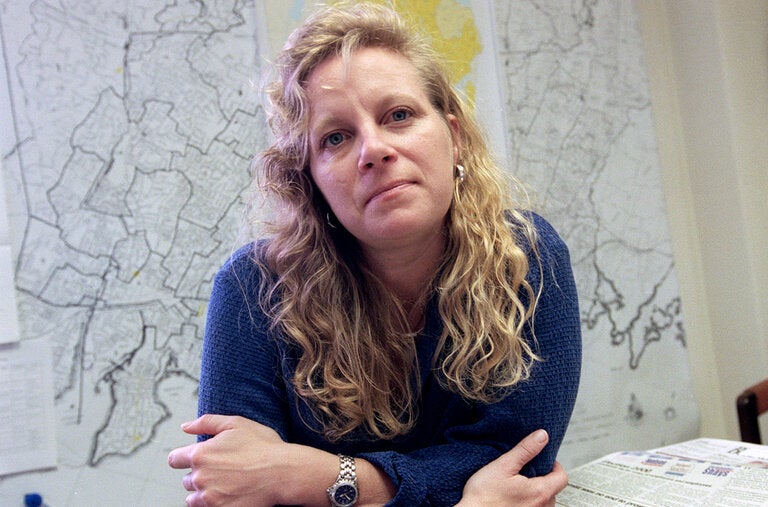
An organizer and author, she believed that a union was only as strong as its members and trained thousands “to take over their unions and change them.”
By

His clients included antiwar protesters and terror suspects. His practice “not only defended needy people, it propelled social movements,” a colleague said.
By

In a decades-long collaboration with the director James Cameron, he produced three of the highest-grossing films of all time.
By Yan Zhuang and

His moving and often painful free-verse observations on friends’ deaths, the Holocaust and other topics won him many devoted fans.
By
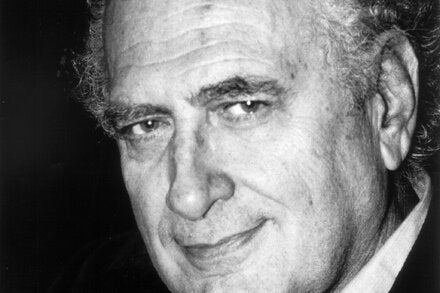
Vic Seixas, Winner of 15 Grand Slam Tennis Titles, Dies at 100
Once declared “the face of American tennis,” he was ranked among the leading players in the United States from the 1940s to the ’60s.
By
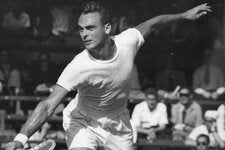
Yoshihiro Uchida, Peerless Judo Coach, Is Dead at 104
A coach at San Jose State for seven decades, he helped establish the sport in America and trained generations of athletes, many of whom went to the Olympics.
By
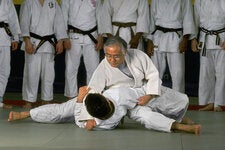
Wayne S. Smith, a Leading Critic of the Embargo on Cuba, Dies at 91
A former State Department official, he resigned in protest in 1982 over Cuba policy, then spent decades trying to rebuild relations with the island nation.
By

Paal Enger, Who Stole Munch’s ‘The Scream,’ Is Dead at 57
A promising player for a storied Norwegian soccer club, he instead found infamy for stealing one of the world’s most famous artworks.
By

Nancy Azara, Sculptor Who Created a Haven for Feminist Artists, Dies at 84
She helped establish the New York Feminist Art Institute. In her own work — monumental pieces carved from found lumber — she evoked ancient feminine imagery.
By
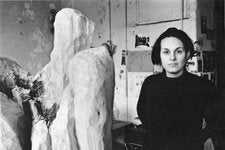
Advertisement
Overlooked No More: Otto Lucas, ‘God in the Hat World’
His designs made it onto the covers of fashion magazines and onto the heads of celebrities like Greta Garbo. His business closed after he died in a plane crash.
By
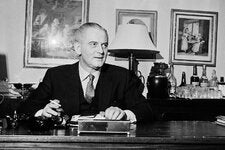
Overlooked No More: Lorenza Böttner, Transgender Artist Who Found Beauty in Disability
Böttner, whose specialty was self-portraiture, celebrated her armless body in paintings she created with her mouth and feet while dancing in public.
By
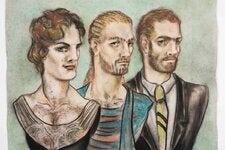
Overlooked No More: Hansa Mehta, Who Fought for Women’s Equality in India and Beyond
For Mehta, women’s rights were human rights, and in all her endeavors she took women’s participation in public and political realms to new heights.
By

Overlooked No More: Bill Hosokawa, Journalist Who Chronicled Japanese American History
He fought prejudice and incarceration during World War II to lead a successful career, becoming one of the first editors of color at a metropolitan newspaper.
By Jonathan van Harmelen and
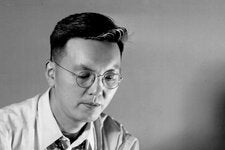
Overlooked No More: Min Matheson, Labor Leader Who Faced Down Mobsters
As director of the International Ladies’ Garment Workers’ Union, she fought for better working wages and conditions while wresting control from the mob.
By


She was a frequent sight on the series, which began in 2019, and impressed fans with her straightforward attitude.
By Emmett Lindner

His baroque fusions of bright paint, wood and other detritus wowed the art world. But as his fame faded, he turned his attention to historic preservation.
By Adam Nossiter

A founder of the influential music magazine The Fader, he also bridged the worlds of hip-hop and the Fortune 500 with his innovative marketing agency.
By Alex Williams

She painted and sculpted, but she was best known for her oversized still lifes, painted from photographs and crowded with color and detail.
By Will Heinrich

He found that a failed contraceptive, tamoxifen, could block the growth of cancer cells, opening up a whole new class of treatment.
By Clay Risen

Celebrated for his mastery of dialogue, he also contributed (though without credit) to the scripts of “Bonnie and Clyde” and “The Godfather.”
By Bill Morris

A favorite of early personal computer users, his company was eventually overtaken by Microsoft Word. He later came out as gay and became an L.G.B.T.Q. activist.
By Michael S. Rosenwald

Womanly power was a recurring theme of her work, expressed in idiosyncratic sculpture and paintings that did not align with prevailing trends.
By William Grimes

She wrote memorably about her upbringing by a circle of maternal elders and the life lessons they imparted, and of her yearning for the mother she lost.
By Penelope Green

Often compared to Orwell and Kafka, he walked a political tightrope with works that offered veiled criticism of his totalitarian state.
By Rusha Haljuci

The first woman to serve as the paper’s national editor, she focused on issues of race, class and poverty, drawing prizes, and rose to the newsroom’s top echelon.
By Trip Gabriel

She developed one of the first modern intensive care units for premature babies, helping newborns to breathe with lifesaving new treatments.
By Randi Hutter Epstein

A former hippie who chafed at wealth, she married a Chicago real estate titan and, after his death, donated hundreds of millions in her adopted city and beyond.
By Alex Williams

Only the second Puerto Rican native elected to the Hall of Fame, he hit 379 home runs but later served time in prison on a drug-smuggling charge.
By Richard Goldstein
Advertisement

An artist and a musician as well, he had a long list of credits that included the sitcoms “Roseanne” and “Veep.”
By Trip Gabriel and Orlando Mayorquín

Her warning of a big buildup of enemy troops poised to attack South Vietnam in 1968 was ignored, a major U.S. Army intelligence failure during the war.
By Richard Sandomir

He carved out a niche by singing the music of living composers from his own country. He was praised by critics at home and abroad.
By Adam Nossiter

With an emphasis on younger viewers, he established the networks as serious rivals to ABC, CBS and NBC, which had ruled television for nearly 40 years.
By Trip Gabriel

A co-founder of the Center School in Manhattan, she implemented once-radical ideas that put the students first. She retired four decades later, at 91.
By Clay Risen

As a performer, he was a leading figure in the early days of Nashville rock ’n’ roll. He later found success as a writer, producer and publisher.
By Bill Friskics-Warren

He and his band, the Texas Jewboys, won acclaim for their satirical takes on American culture. He later wrote detective novels and ran for governor of Texas.
By Clay Risen

He hanged high-profile inmates in exchange for a reduction in his own robbery and murder sentences, and became a social media sensation after his release.
By Saif Hasnat and Yan Zhuang

He was not a Hollywood household name. But his face was one anyone who watched TV or movies over the past several decades could recognize.
By Alexandra E. Petri

He began handling dogs in his native Japan and then became a poodle specialist, leading Spice and Sage to Best in Show victories.
By Richard Sandomir
Advertisement

Hailed as a pioneer of D.I.Y. programming, he oversaw groundbreaking how-to shows on public television in the days before HGTV and YouTube.
By Alex Williams

His 2020 lament “$20 Bill” was covered by scores of artists and, a fellow musician said, might well be destined for the folk music canon.
By Penelope Green

Era el líder de la banda de rap-rock Crazy Town, conocida sobre todo por la exitosa canción “Butterfly”.
By Sara Ruberg and Hank Sanders

He was part of the superstar tag team the Wild Samoans and a member of the dynasty of Samoan wrestlers that includes today’s biggest star, his son.
By Alexandra E. Petri

He elevated many of France’s most provocative writers through his publishing house, La Fabrique, but he made his greatest mark as a politically engaged, and strolling, historian of Paris.
By Adam Nossiter

A literary critic, essayist and author, he was a leading voice among revisionist skeptics who saw Freud as a charlatan and psychoanalysis as a pseudoscience.
By Scott Veale

Mr. Perry also appeared in television and movies, including roles in “Blue Crush,” “Pirates of the Caribbean: On Stranger Tides” and “Hawaii Five-0.”
By Remy Tumin

Da Silvano was a celebrity hangout, drawing boldface names like Madonna, Barry Diller and Yoko Ono. It was often referred to as the downtown Elaine’s.
By Alex Vadukul

As a journalist, singer, label owner and radio producer, he fostered a community of musicians on the outskirts of Americana.
By Clay Risen

He left a career in tech and found success as a producer, winning four Tonys. His mission: staging productions about underrepresented communities.
By Richard Sandomir
Advertisement

He spent his early career as a professional sumo wrestler.
By Emmett Lindner

He had success on the rugby pitch and in boardrooms, building a media empire and boosting Heinz’s profits, but his fortunes buckled in the global financial crisis.
By Trip Gabriel

Seeking to bring the ideas of Black power into the classroom — and coining the term “ethnic studies” — he clashed with a university as well as allies on the left.
By Clay Risen

She was revered as an essential guardian of the country’s memory of war and repression long after the Franco dictatorship.
By Adam Nossiter

With the Contortions and James White and the Blacks, the songwriter and saxophonist set out to challenge musicians and stir up audiences.
By Jon Pareles

He overcame segregation at home and in the military to serve three tours in Vietnam as a member of the storied special operations unit.
By Alex Williams

He turned “an insignificant trade house” into a powerhouse, publishing best sellers like “The Silence of the Lambs” and “All Creatures Great and Small.”
By Sam Roberts

In a wide-ranging career (from “M*A*S*H” to “Ordinary People” to “The Hunger Games”), he could be endearing in one role, menacing in another and just plain odd in a third.
By Clyde Haberman

An art world power, she represented more than 70 artists and estates and ran two large exhibition spaces in Manhattan as well as offshoots abroad.
By Will Heinrich

The founder of the renowned Woods Hole Research Center in Massachusetts, he also helped shape U.S. policies on controlling toxic substances like DDT.
By Keith Schneider
Advertisement

Mays, who died on Tuesday at 93, had been perfect for so long that the shock of seeing baseball get the best of him was the shock of seeing a god become mortal.
By Kurt Streeter

Mays, the Say Hey Kid, was the game’s exuberant embodiment of the complete player. Some say he was the greatest of them all.
By Richard Goldstein

As a journalist and later as a Yale professor, she provided the intellectual tools to help actors, directors and audiences understand challenging theatrical work.
By Clay Risen

She received a diagnosis of Stage 4 breast cancer late in her second pregnancy and described her experience in a book, “Little Earthquakes: A Memoir.”
By Richard Sandomir

His remarkable sprint in the final yards on a muddy track in the 1964 Games in Tokyo made him the only American ever to win the gold medal in that event.
By Richard Goldstein

While he was reviving Portland, Ore., as a vibrant, pedestrian-friendly city, he was also sexually abusing a teenage girl over three years, he later admitted.
By Michael S. Rosenwald
Advertisement
Advertisement